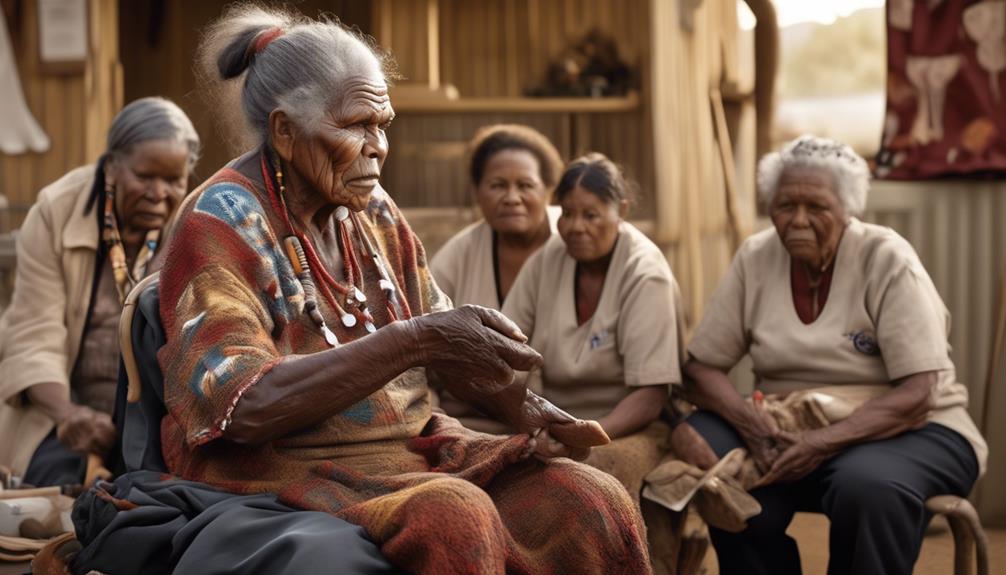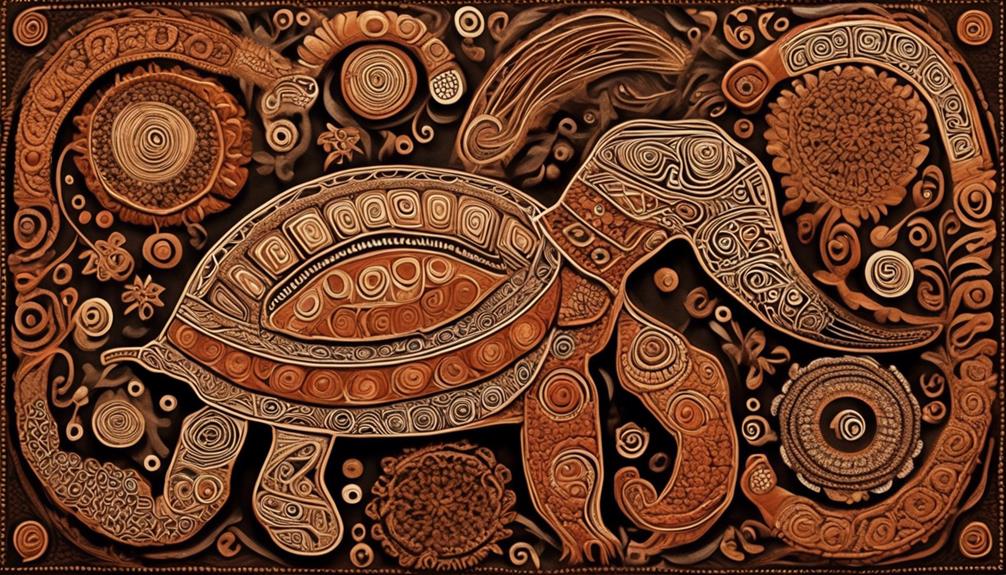Exploring the complex realm of cultural traditions, questioning whether individuals from outside a specific culture should partake in smudging ceremonies presents a challenging dilemma, much like untangling a delicate web. It is essential to thoroughly understand the implications of our choices, as they may have far-reaching effects.
It's a topic that requires thoughtful consideration and a willingness to engage in challenging conversations. But why is it so important to take a closer look at this issue, and what does it mean for those who seek to honor indigenous traditions while also respecting cultural boundaries?
Key Takeaways
- Non-Indigenous individuals should approach smudging with appreciation, understanding the cultural and spiritual significance of smudging.
- Respectful participation requires acknowledging traditional protocols and methods, treating smudging tools with reverence.
- Supporting Indigenous communities and amplifying their voices is part of appreciating smudging.
- Mindful engagement involves actively seeking opportunities to listen and learn from Indigenous voices, deepening our spiritual connection and understanding.
Cultural Significance of Smudging
The practice of smudging holds deep cultural significance for many Indigenous communities, serving as a sacred ritual that's integral to their spiritual and ceremonial traditions. For these communities, smudging isn't just a casual activity but a deeply spiritual practice with a rich history and symbolism.
It's a healing ritual that encompasses the burning of specific herbs, such as sage, sweetgrass, and cedar, to purify the mind, body, and spirit. Each herb holds its own meaning and purpose, contributing to the overall cleansing and healing process.
The act of smudging is often accompanied by prayers, chants, or specific ceremonial practices that vary among different Indigenous cultures. It's essential to recognize that smudging isn't simply about the physical act of burning herbs, but rather a holistic ceremony that connects individuals to their ancestors, the natural world, and the divine.
Understanding the spiritual and cultural significance of smudging is crucial in acknowledging its profound impact on Indigenous communities and the importance of respecting and preserving this sacred tradition.
Understanding Appropriation Vs. Appreciation

Understanding the difference between appropriation and appreciation is crucial when engaging with cultural practices and traditions. Appropriation involves taking elements of a culture without understanding or respecting their significance, often leading to the exploitation or misrepresentation of those practices. On the other hand, appreciation entails actively seeking to understand the cultural context, history, and significance behind the practices, and participating in them with respect and gratitude.
When it comes to smudging, non-Indigenous individuals must approach it with a mindset of appreciation rather than appropriation. This means taking the time to learn about the cultural and spiritual significance of smudging in Indigenous communities, understanding the proper protocols and traditional methods, and participating in the practice with reverence and respect for its origins. It also involves acknowledging the historical and ongoing struggles that Indigenous communities face, and supporting them in meaningful ways.
Navigating Respectful Participation
In respectfully participating in smudging, non-Indigenous individuals must prioritize understanding the cultural and spiritual significance of this practice within Indigenous communities, acknowledging its traditional protocols and methods, and engaging with reverence and respect for its origins. Respectful participation entails a deep appreciation for the sacredness of smudging, recognizing it as a ceremonial act with profound meaning for Indigenous peoples. It requires actively seeking knowledge about the specific traditions and beliefs associated with smudging, as well as demonstrating a commitment to upholding its integrity.
| Key Considerations | Examples |
|---|---|
| Learn about smudging | Attend workshops, read reputable sources |
| Seek permission | Ask Indigenous elders or knowledge keepers for guidance |
| Respect sacred items | Treat smudging tools with utmost care and reverence |
| Honor Indigenous traditions | Support Indigenous communities, amplify their voices |
Cultural understanding serves as the foundation for respectful participation in smudging, fostering an environment of mutual respect and appreciation. By approaching smudging with humility and a willingness to listen, non-Indigenous individuals can contribute to the preservation and celebration of Indigenous traditions.
Honoring Indigenous Traditions

Navigating respectful participation in smudging, we can honor Indigenous traditions by actively supporting and amplifying the voices of Indigenous communities. It's crucial to approach Indigenous practices with reverence and understanding, recognizing the deep spiritual connection they hold for Indigenous peoples.
To honor and respect Indigenous traditions, we can take several meaningful steps:
- Education and Awareness: Engage in learning about the histories, cultural significance, and protocols of Indigenous practices. Seek out educational resources provided by Indigenous individuals and communities to gain a deeper understanding.
- Collaboration and Partnership: Actively seek opportunities to collaborate with and support Indigenous communities. This may involve participating in events, workshops, or ceremonies facilitated by Indigenous leaders, or engaging in initiatives that promote the preservation of Indigenous traditions.
- Respectful Participation: When engaging in Indigenous practices, do so with utmost respect and mindfulness. Follow any protocols or guidelines set forth by the Indigenous community and approach the experience with a sincere and open heart.
- Amplification of Indigenous Voices: Elevate the voices of Indigenous individuals and communities by sharing their stories, advocating for their rights, and creating platforms for their voices to be heard and valued.
Cultivating Mindful Engagement
To cultivate mindful engagement with Indigenous traditions, we must approach our interactions with humility and a willingness to learn from the wisdom of Indigenous communities. Mindful practice involves deepening our spiritual connection with the traditions we seek to engage with. This requires us to be present, attentive, and respectful as we immerse ourselves in the practices and beliefs of Indigenous cultures.
Creating inclusive spaces that welcome diverse perspectives is essential for cultivating mindful engagement. It involves acknowledging the multiplicity of Indigenous traditions and the various ways they're practiced. By embracing this diversity, we can learn from the rich tapestry of Indigenous knowledge and wisdom, fostering an environment of mutual respect and understanding.
Mindful engagement also entails actively seeking out opportunities to listen to and learn from Indigenous voices. This can involve participating in educational workshops, reading literature by Indigenous authors, or engaging in meaningful conversations with Indigenous community members. By doing so, we can gain a deeper appreciation for the significance of Indigenous traditions and the profound impact they've on the spiritual and cultural wellbeing of Indigenous peoples.
Frequently Asked Questions
Can Non-Indigenous People Smudge in Public Spaces or at Events?
In considering smudging etiquette, it's essential to respect indigenous traditions and cultural appropriation. Non-indigenous individuals should approach smudging with reverence, seeking guidance and permission from indigenous elders or knowledge keepers.
Public smudging in events must honor indigenous protocols and spaces. Understanding the sacredness of smudging and its cultural significance is crucial. By acknowledging the origins and cultural context, we can ensure that smudging is approached with the respect it deserves.
Is It Appropriate for Non-Indigenous People to Purchase Smudging Materials and Tools?
Purchasing smudging materials as non-Indigenous people requires careful consideration of cultural appropriation and respectful participation. It's essential to understand the cultural significance and history behind smudging.
Respectful participation involves seeking permission, learning about the traditions, and supporting Indigenous communities. Engaging in practices without understanding can perpetuate harm.
We must approach this with humility and a willingness to listen and learn from Indigenous perspectives.
What Are Some Common Misconceptions About Smudging That Non-Indigenous Individuals Should Be Aware Of?
Common misconceptions about smudging exist due to cultural appropriation. Non-indigenous individuals should be aware that respectful incorporation of spiritual practices is crucial. It's vital to understand the depth and significance of smudging.
Assuming it's simply burning herbs misses the deeper spiritual and cultural meanings. Acknowledging this complexity fosters genuine respect and understanding. This idiom 'don't judge a book by its cover' highlights the need to delve deeper into the true essence of smudging.
How Can Non-Indigenous Individuals Respectfully Incorporate Smudging Into Their Personal Spiritual Practices?
Incorporating smudging into our personal spiritual practices requires cultural understanding and respectful integration.
It's crucial to acknowledge the potential for cultural appropriation and approach smudging with reverence.
Non-Indigenous individuals can build a spiritual connection through learning about the cultural significance of smudging and seeking guidance from Indigenous elders or knowledge keepers.
It's essential to approach this practice with humility and a genuine desire to honor and respect Indigenous traditions.
Are There Specific Guidelines or Protocols for Non-Indigenous Individuals to Follow When Participating in Smudging Ceremonies or Rituals?
When participating in smudging ceremonies, cultural sensitivity and respectful participation are crucial. Understanding boundaries and ethical considerations is essential for non-indigenous individuals.
It's important to approach smudging with deep respect and an open mind, acknowledging the significance and sacredness of the practice.
Careful consideration of the cultural context and seeking guidance from Indigenous elders or knowledge keepers can provide valuable insights for respectful participation in smudging ceremonies.
Conclusion
In conclusion, it's crucial for us to approach non-indigenous smudging with respect and mindfulness. Just as we wouldn't want our cultural traditions appropriated, we must honor and appreciate the significance of indigenous practices.
Let's tread carefully, like delicate footsteps in a sacred space, as we navigate our participation in smudging ceremonies. By doing so, we can ensure that we're engaging in a way that's respectful and considerate of the cultural significance of this ancient tradition.
Mary is a passionate writer who brings creativity and a fresh perspective to our team. Her words have the power to captivate and inspire, making her an essential contributor to our content. Mary’s commitment to storytelling and dedication to promoting Indigenous culture ensures that her work touches the hearts of our readers. We’re fortunate to have her as part of our team.










